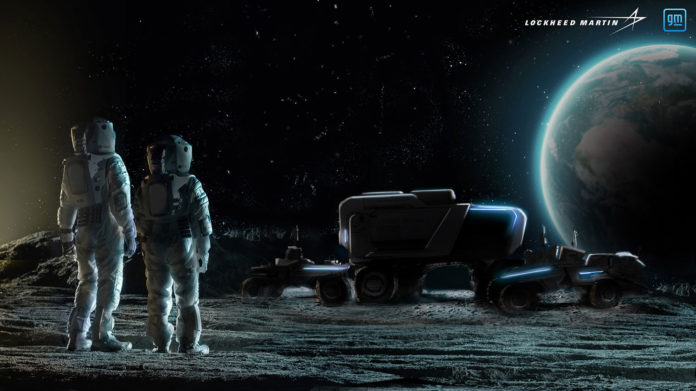If everything goes according to NASA’s ambitious schedule for the Artemis Program, the first woman and the next man will be able to step on the lunar surface as early as 2024. Lockheed Martin and General Motors want to ensure astronauts have more range in their ‘off-roading’ experiences on the Moon during the program’s missions. The companies have joined forces to develop the next generation of lunar vehicles to transport astronauts on the surface of the Moon as a part of NASA’s Artemis program.
Called Lunar Terrain Vehicle (LTV), the rovers could be used by Artemis astronauts to extend and enhance the exploration of the lunar surface farther than ever before. It is the first of many types of surface mobility vehicles needed for NASA’s Artemis program.
NASA’s next-generation lunar vehicle application states that various modern technologies must be used, including electric vehicle systems, autonomous driving, and hazardous terrain capabilities.
At a recent presentation, Lockheed Martin and GM announced that their development will be equipped with autonomous, self-driving systems that will allow the rovers to prepare for human landings, provide commercial payload services, and enhance the utility of scientific payloads and experiments. In addition to being designed with autonomous driving features, the concept presented by the companies shows that the vehicle will be completely electric.
The lunar vehicle under development will also have a “significantly higher range” compared to the electric Apollo Lunar Roving Vehicle (LRV) that was used on Apollo’s 15-17 missions in the early 70s of the last century. Unlike the Apollo rovers that only traveled 4.7 miles (7.6 kilometers) from the landing site, the next-generation lunar vehicles are being designed to traverse significantly farther distances to support the first excursions of the Moon’s south pole, where it is cold and dark with more rugged terrain.
The rovers will also be able to withstand the extreme temperatures of the Moon, which can go from 280 °F (138 °C) in sunlight to -260 °F (-162 °C) at night or in the shadows.
As the project is new, the vehicle is still in the preliminary stages of development, and there is no exact information about size, weight, and capacities.
“Surface mobility is critical to enable and sustain long-term exploration of the lunar surface. These next-generation rovers will dramatically extend the range of astronauts as they perform high-priority science investigation on the Moon that will ultimately impact humanity’s understanding of our place in the solar system,” said Rick Ambrose, executive vice president, Lockheed Martin Space.
“General Motors made history by applying advanced technologies and engineering to support the Lunar Rover Vehicle that the Apollo 15 astronauts drove on the Moon,” said Alan Wexler, senior vice president of Innovation and Growth at General Motors. “Working together with Lockheed Martin and their deep-space exploration expertise, we plan to support American astronauts on the Moon once again.”
